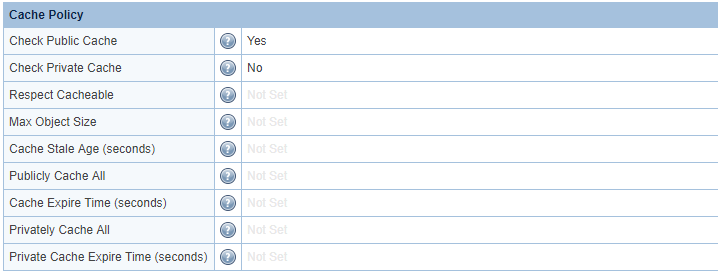This is an old revision of the document!
LSCache + Joomla Configuration
LSCache, similar to Varnish cache, is a simpler and more efficient page caching solution built-in to LiteSpeed Web Server. When used in conjunction with Joomla, you can expect significant performance gains with a quick and easy setup. Cache management is also made significantly easier and more flexible. While the LiteSpeed cache plugin for Joomla is still in development, rewrite rules can still be used to customize LSCache's behavior.
Below are some recommended configurations to enable LSCache and get it working with your Joomla site(s).
Configure Server/Virtual Host Level Cache Root And Cache Policy
Server/VirtualHost level cache storage needs to be configured properly for your environment. Select your server setup from the Web Server Configuration section of our LiteSpeed Cache Installation Guide and follow the instructions to set the server/virtual host level cache root and cache policy.
Check Public Cache → Yes
Check Private Cache → No
Publicly cache all → No or Not set
privately cache all → No or Not set
Rewrite rules
Rewrite rules should be added to your .htaccess file, located in the document root of your website, right before the following line:
## Begin - Joomla! core SEF Section.
Case 1: Cache all URLs for 2 mins excluding ''/administrator'' URLs
########## Begin - Litespeed cache
<IfModule LiteSpeed>
RewriteEngine On
CacheDisable public /
RewriteCond %{REQUEST_METHOD} ^HEAD|GET$
RewriteCond %{ORG_REQ_URI} !/administrator
RewriteRule .* - [E=Cache-Control:max-age=120]
</IfModule>
########## End - Litespeed cache
Note: The CacheDisable public / directive is used to help protect against globally enabled caching and is optional. Instead, the server's global cache settings should be checked to ensure that cache is not enabled globally.
Note: Do not use CacheEnable public / here as it will enable caching for all URLs belonging to this virtual host, including admin pages.
Case 2: Caching all URLs except those specified
########## Begin - Litespeed cache
<IfModule LiteSpeed>
RewriteEngine On
CacheEnable public /
RewriteCond %{REQUEST_METHOD} ^HEAD|GET$
RewriteCond %{ORG_REQ_URI} /administrator/
RewriteRule .* - [E=Cache-Control:no-cache]
</IfModule>
########## End - Litespeed cache
Case 3: Caching URLs for specified domains only
########## Begin - Litespeed cache
<IfModule LiteSpeed>
RewriteEngine On
RewriteCond %{REQUEST_METHOD} ^HEAD|GET$
RewriteCond %{HTTP_HOST} ^domain.com [NC] [OR]
RewriteCond %{HTTP_HOST} ^www.domain.com [NC]
RewriteCond %{ORG_REQ_URI} !/administrator
RewriteRule .* - [E=Cache-Control:max-age=120]
</IfModule>
Note: We recommend using a different domain for your backend so that you can add/edit/preview a website's content through the admin domain without worrying about these changes being cached and seen by visitors. For example: admin.domain.com for admin users, domain.com and www.domain.com for the general public. You can specify which domain to be cached, such as domain.com and www.domain.com, so that admin.domain.com won't be cached.
Verify Cache Setup
Please verify to see if you can see “X-LiteSpeed-Cache: hit” by following this wiki.
Deleting Outdated Cache Files Using A Cron Job
Please refer to this wiki.
